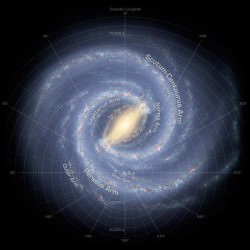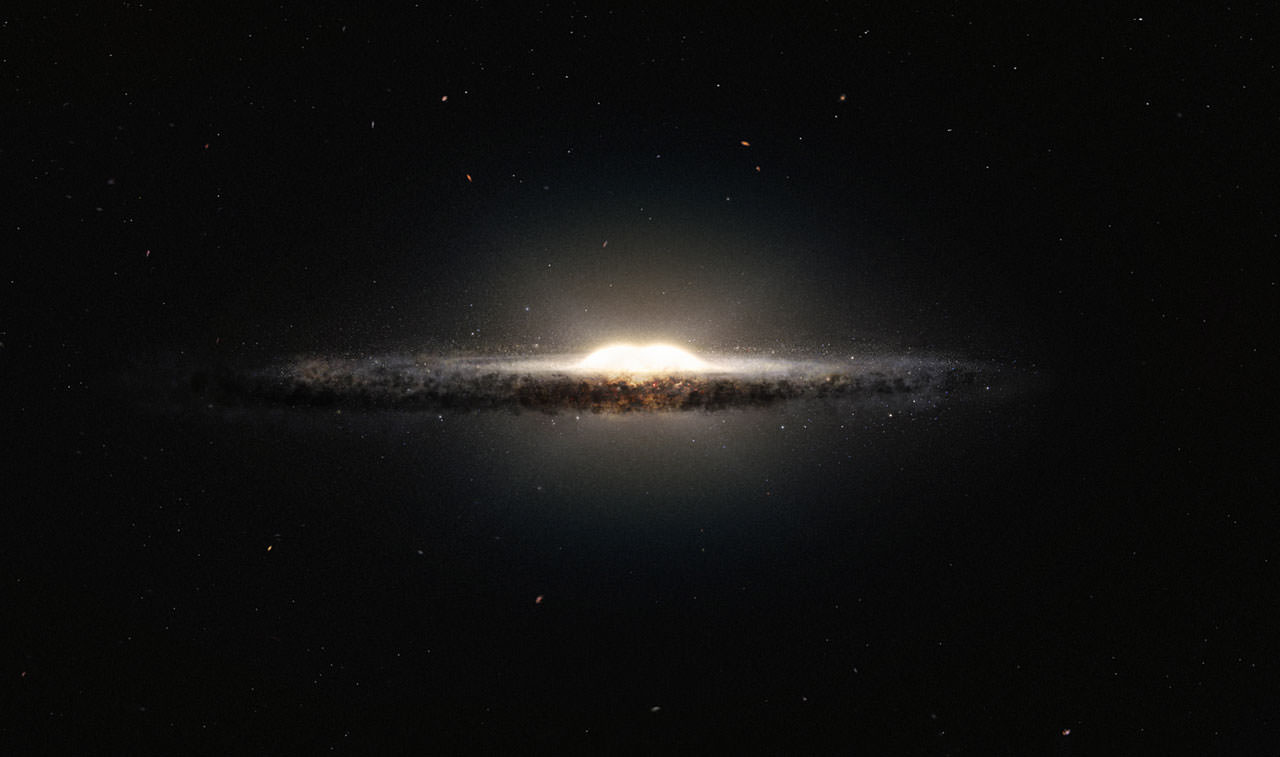Remember that 3-D map of the Milky Way that postulated that the center of the galaxy is shaped like a box or peanut? A new math model of the bulge shows that stars in the center of that bulge move in figure-eight orbits (which can also be interpreted as a peanut-shell shape.) Before, previous studies suggested these orbits looked more like bananas.
“The difference is important; astronomers develop theories of star motions to not only understand how the stars in our galaxy are moving today but also how our galaxy formed and evolves,” the Royal Astronomical Society stated.
In the middle of the galaxy, there are a lot of gravitational forces at play due to the sheer number of stars, as well as particles of dust and dark matter, congregating in the area. This makes it harder to model orbits than in more simple situations, such as our own solar system.
This is how a new model envisions it working:

“As the stars go round in their orbits, they also move above or below the plane of the bar. When stars cross the plane they get a little push, like a child on a swing,” the RAS said.
“At the resonance point, which is a point a certain distance from the center of the bar, the timing of the pushes on the stars is such that this effect is strong enough to make the stars at this point move up higher above the plane. (It is like when a child on the swing has been pushed a little every time and eventually is swinging higher.) These stars are pushed out from the edge of the bulge.”
The researchers suppose that the stars would have two “vertical oscillations” in each orbit, but in between the orbits are shaped somewhat like a peanut shell. This “could give rise to the observed shape of the bulge, which is also like a peanut-shell,” RAS stated.
The research (led by Alice Quillen, an astronomy researcher at the University of Rochester) is available in the Monthly Notices of the Royal Astronomical Society, as well as (in preprint version) on Arxiv.
Source: Royal Astronomical Society

